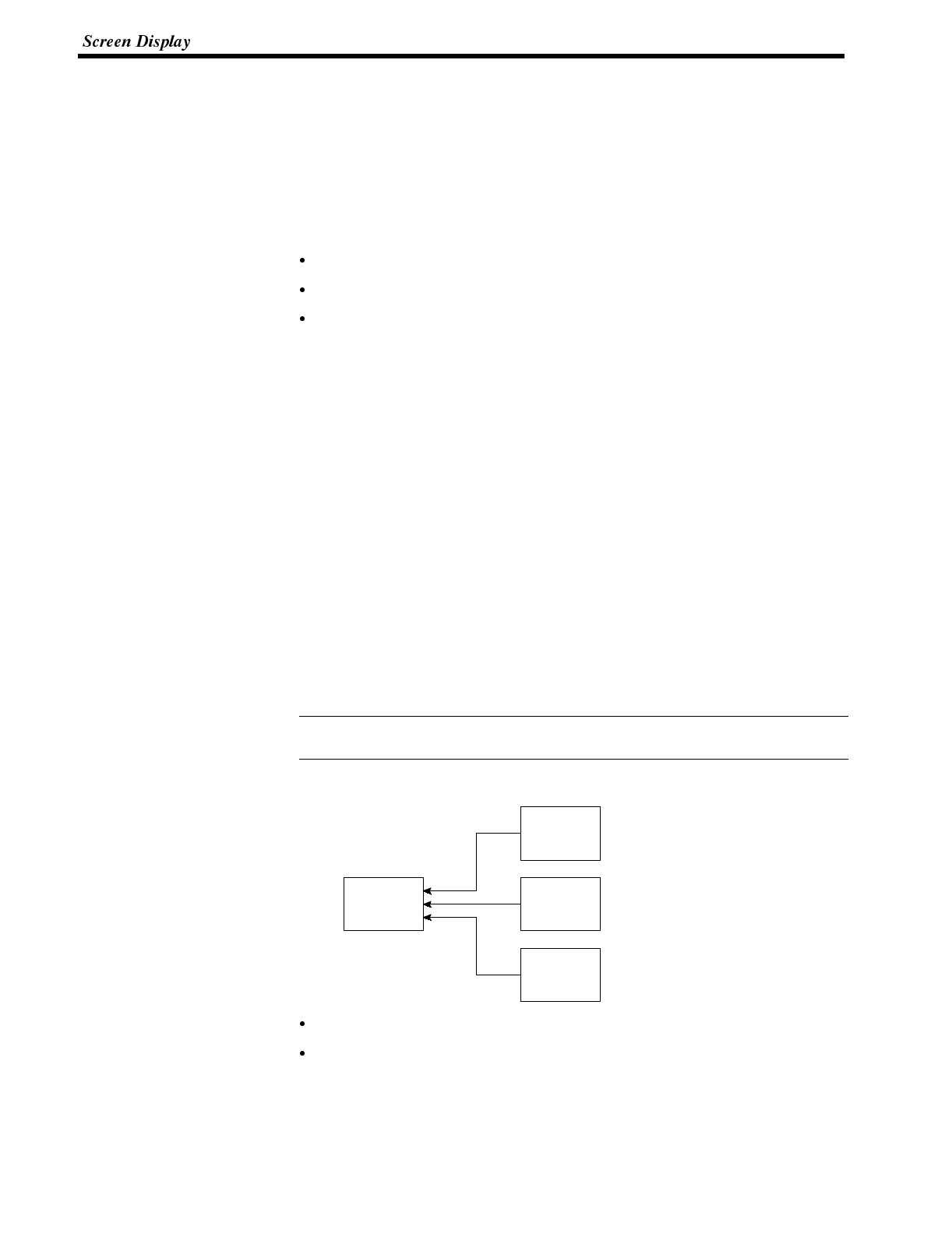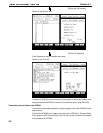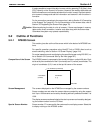
Reference
Section 4-3
5-3 Screen Display
This section describes the screen information required for the operation with the
NT600S.
5-3-1 Classification of Screens
The NT600S is providedwith the following types of screens whichare classified by
the display method.
Normal screen
Overlapping screen
Continuous screen
The screen type is set with each screen in the “Screen Selection” screen of the
support tool. Select a screen type according to the purpose, and create characters
and figures on the screen. The details of each screen type are given below.
Normal Screen A normal screen is the basic screen of the NT600S. It is not necessary to select a
screen type (overlapping or consecutive) when to create the screen data on a nor-
mal screen.
When a normal screen is selected, existing screens will be erased and a normal
screen will be displayed.
Overlapping Screen Several normal screens can be overlapped and displayed as one screen. A group
of overlapped screens is called an “overlapping screen”.
Several normal screens are displayed in the order of screen numbers which have
been designated to each screen and form an overlapping screen. Up to eight
screens can be overlapped to form oneoverlapping screen. The base screen used
for making an overlapping screen is called a “parent screen”, and a bunch of
screens which are laid over the parent screen are called “child screens”.
All display elements can be used on a parent screen.
The screen attributes such as a buzzer attribute set in the parent screen become
effective in an overlapping screen.
[Example overlapping screen]
(1)
(2)
(3)
Screen #8
Screen #10
Screen #7
Screen #25
This is an
overlapping
screen.
This is an
overlapping
screen.
Parent screen: #8
Child screens: #10, #7, and #25
When screen #8 is designated, screen #8 becomes the parent screen and the
child screens #10,#7, and#25 are displayed over the parent screenin that order.


















